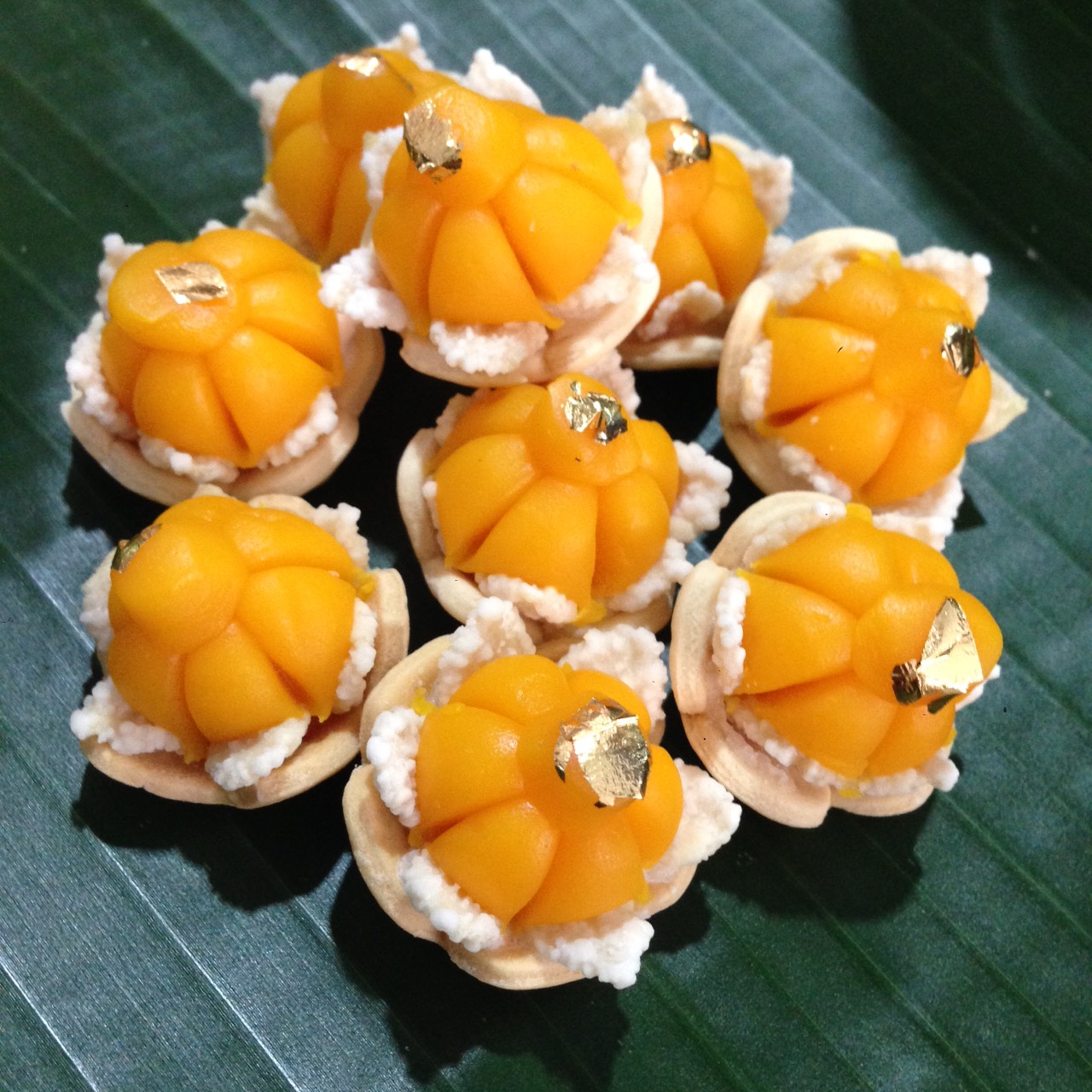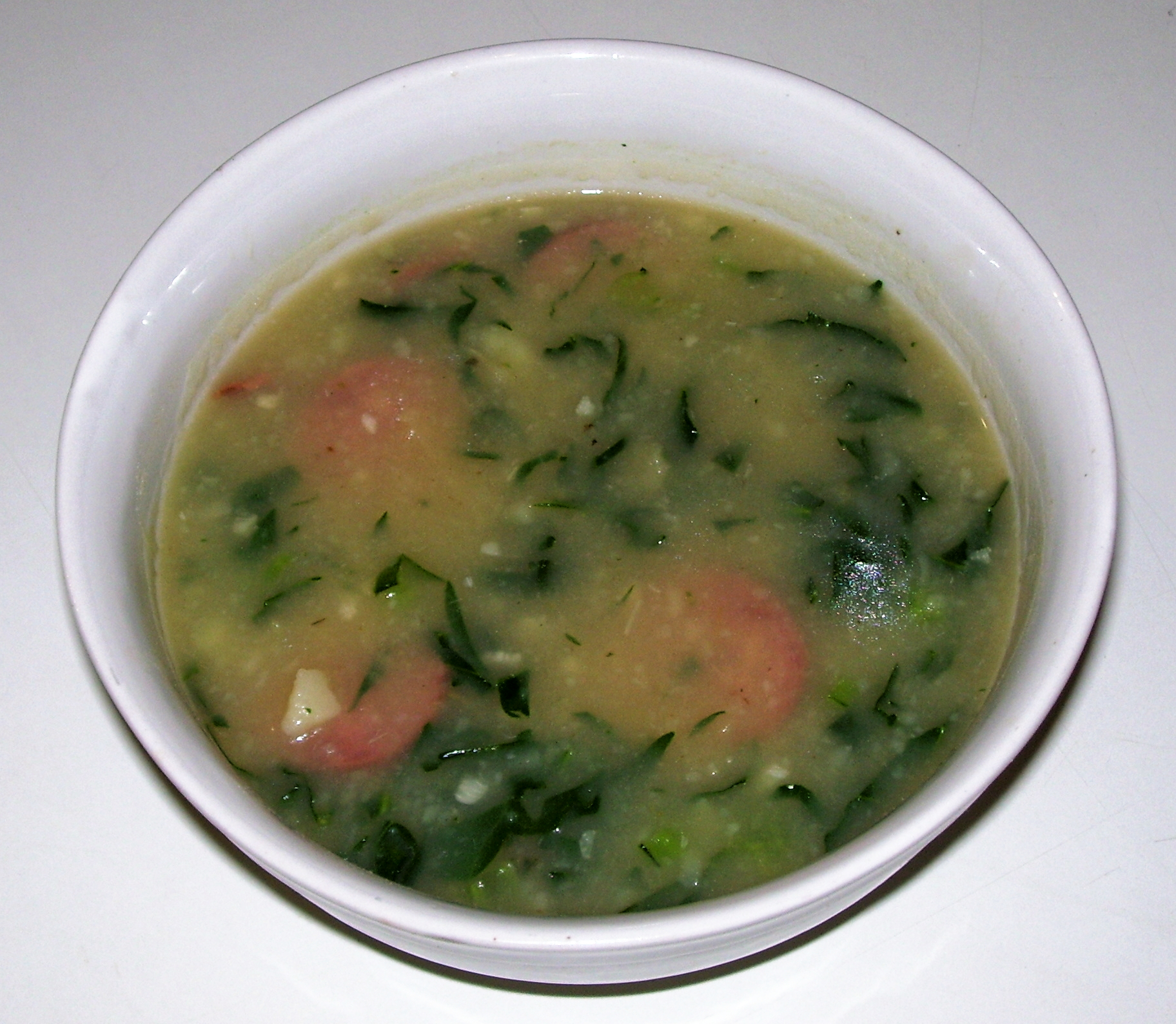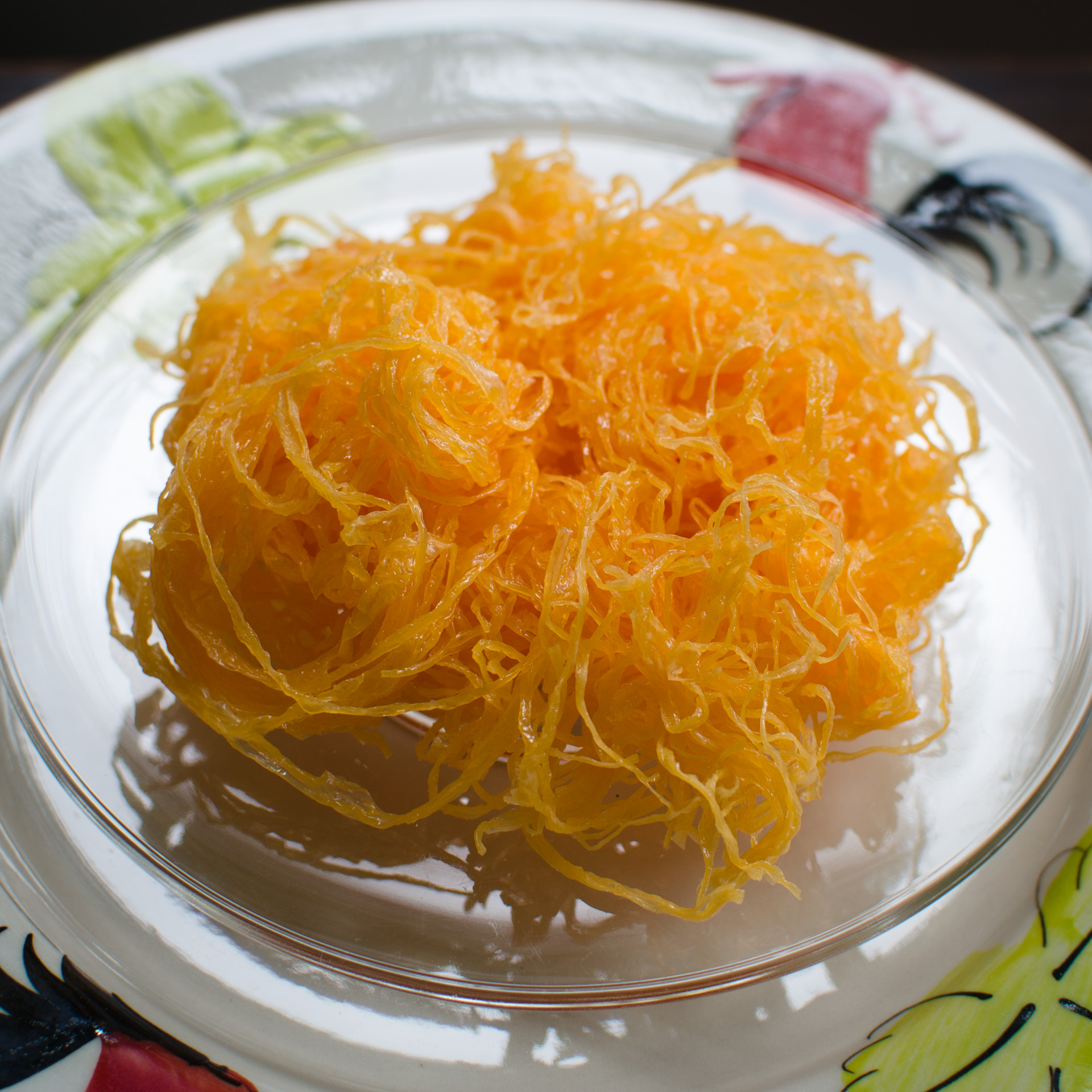|
Thong Ek
''Thong ek'' (, ), also known as "wheat flour dumplings with egg yolks", is one of the nine auspicious traditional Thai desserts. It is a golden sweet carved as various types of flowers decorated with a piece of gold leaf on top, popularly served in very significant occasions such as career advancement ceremonies. Etymology In Thai, the word ''thong'' means 'gold,' and the word ''ek'' means 'prime.' It is believed that when ''thong ek'' is used in auspicious rituals or given as a gift to seniors, it will bring wealth and superiority in work, helping the recipients to become number one in their field. History ''Thong ek'' is in the same category as other egg-based sweets (i.e. ''thong yip'', ''thong yot'', '' foi thong'', ''sangkhaya'' and ''mo kaeng''). It was introduced by Japanese-Portuguese chef Maria Guyomar de Pinha in the reign of Narai during the Ayutthaya Kingdom. Its origin is a Portuguese sweet which has yolk and sugar as main ingredients. Maria Guyomar de Pinha ... [...More Info...] [...Related Items...] OR: [Wikipedia] [Google] [Baidu] |
Thailand
Thailand, officially the Kingdom of Thailand and historically known as Siam (the official name until 1939), is a country in Southeast Asia on the Mainland Southeast Asia, Indochinese Peninsula. With a population of almost 66 million, it spans . Thailand Template:Borders of Thailand, is bordered to the northwest by Myanmar, to the northeast and east by Laos, to the southeast by Cambodia, to the south by the Gulf of Thailand and Malaysia, and to the southwest by the Andaman Sea; it also shares maritime borders with Vietnam to the southeast and Indonesia and India to the southwest. Bangkok is the state capital and List of municipalities in Thailand#Largest cities by urban population, largest city. Tai peoples, Thai peoples migrated from southwestern China to mainland Southeast Asia from the 6th to 11th centuries. Greater India, Indianised kingdoms such as the Mon kingdoms, Mon, Khmer Empire, and Monarchies of Malaysia, Malay states ruled the region, competing with Thai states s ... [...More Info...] [...Related Items...] OR: [Wikipedia] [Google] [Baidu] |
Coconut Jam
Coconut jam, also known as kaya jam or simply kaya, is a sweet spread made from a base of coconut milk, eggs, sugar and sometimes pandan leaves as a flavouring. It is popular throughout Southeast Asia. Origin The origins of kaya are subject to various interpretations. Some sources suggest it is a Eurasian jam unique to Singapore and Malaysia, adapted from a Portuguese egg jam. Others propose that Hainanese immigrants created kaya toast by adapting what they had previously prepared while serving on British ships during the Straits Settlements period. In Thailand, a similar spread is known as sangkhaya, while in the Philippines, an eggless version called matamís sa báo is made from coconut cream and sugar. The spread's widespread popularity across these regions has led to various adaptations and flavors, making kaya a versatile and beloved component of Southeast Asian cuisine. Indonesia, Malaysia and Singapore The word for coconut jam in the Malay language, kaya, means ... [...More Info...] [...Related Items...] OR: [Wikipedia] [Google] [Baidu] |
List Of Thai Desserts
This is a list of Thai khanom, comprising snack A snack is a small portion of Human food, food generally Eating, eaten between meals. Snacks come in a variety of forms including Food packaging, packaged snack foods and other processed foods, as well as items made from fresh ingredients at ho ...s and desserts that are a part of Thai cuisine. Some of these dishes are also a part of other cuisines. The word "khanom" (), refers to snack or dessert, presumably being a compound between two words, "khao" (ข้าว), "rice" and "khnom" (หนม), "sweet". The word "khanom" in the Thai sense is snack or sweet food made from flour. Thai khanom * ''Bua Loy, rice flour rolled into small balls and then cooked in coconut milk.'' * ''Bulan dan mek'' * ''Cendol, Lot chong'' * ''Cha mongkut'' * ''Fakthong kaeng buat'' * ''Foi thong'' * Fresh fruit * ''Grass jelly'' * ''Khanom babin'' * ''Khanom bueang'' – known as Thai crêpes * ''Khanom chan'' – means layer dessert * '' ... [...More Info...] [...Related Items...] OR: [Wikipedia] [Google] [Baidu] |
Portuguese Cuisine
Portuguese cuisine () consists of the traditions and practices of cooking in Portugal. The oldest known book on Portuguese cuisine, entitled ''Livro de Cozinha da Infanta D. Maria de Portugal'', from the 16th century, describes many popular dishes of meat, fish, poultry and others. ''Culinária Portuguesa'', by António-Maria De Oliveira Bello, better known as Olleboma, was published in 1936. Despite being relatively restricted to an Atlantic Ocean, Atlantic, Celtic sustenance, the Portuguese cuisine also has strong French cuisine, French and Mediterranean cuisine, Mediterranean influences. The influence of Portugal's spice trade in the Portuguese East Indies, East Indies, Africa, and the Americas is also notable, especially in the wide variety of spices used. These spices include ''piri piri'' (small, fiery chili peppers), white pepper, black pepper, saffron, paprika, clove, allspice, cumin, cinnamon and nutmeg, used in meat, fish or multiple savoury dishes from Continental Po ... [...More Info...] [...Related Items...] OR: [Wikipedia] [Google] [Baidu] |
Ayutthaya Kingdom
The Ayutthaya Kingdom or the Empire of Ayutthaya was a Thai people, Thai kingdom that existed in Southeast Asia from 1351 to 1767, centered around the city of Phra Nakhon Si Ayutthaya (city), Ayutthaya, in Siam, or present-day Thailand. European travellers in the early 16th century called Ayutthaya one of the three great powers of Asia (alongside Vijayanagara Empire, Vijayanagara and China). The Ayutthaya Kingdom is considered to be the precursor of modern Thailand, and its developments are an important part of the history of Thailand. The name Ayutthaya originates from Ayodhya (Ramayana), Ayodhya, a Sanskrit word. This connection stems from the Ramakien, Thailand's national epic. The Ayutthaya Kingdom emerged from the Mandala (political model), mandala or merger of three maritime city-states on the Lower Chao Phraya Valley in the late 13th and 14th centuries (Lopburi province, Lopburi, Suphan Buri province, Suphanburi, and Ayutthaya). The early kingdom was a maritime confedera ... [...More Info...] [...Related Items...] OR: [Wikipedia] [Google] [Baidu] |
Narai
King Narai the Great (, , ) or Ramathibodi III ( ) was the 27th monarch of Ayutthaya Kingdom, the 4th and last monarch of the Prasat Thong dynasty. He was the king of Ayutthaya Kingdom from 1656 to 1688 and arguably the most famous king of the Prasat Thong dynasty. His reign was the most prosperous during the Ayutthaya period and saw the great commercial and diplomatic activities with foreign nations including the Middle East and the West. During the later years of his reign, Narai gave his favorite – the Greek adventurer Constantine Phaulkon – so much power that Phaulkon technically became the chancellor of the state. Through the arrangements of Phaulkon, the Siamese kingdom came into close diplomatic relations with the court of Louis XIV and French soldiers and missionaries filled the Siamese aristocracy and defense. The dominance of French officials led to frictions between them and the native mandarins and led to the turbulent revolution of 1688 towards the end of h ... [...More Info...] [...Related Items...] OR: [Wikipedia] [Google] [Baidu] |
Maria Guyomar De Pinha
Maria Guyomar de Pina (; 1664 – 1728) (also known as ''Maria Guiomar de Pina'', ''Dona Maria del Pifia'' or as ''Marie Guimar'' and ''Madame Constance'' in French), Thao Thong Kip Ma (), was a Siamese woman from Ayutthaya. She was of mixed Japanese, Portuguese and Bengali Indian ancestry and became the wife of Greek adventurer Constantine Phaulkon. Maria Guyomar is known in Thailand for having introduced new dessert recipes in Siamese cuisine at the Ayutthaya court. Some of her dishes were influenced by Portuguese cuisine, especially egg yolk-based sweets such as '' foi thong'', '' sangkhaya fakthong'' and '' sangkhaya''. Biography Maria was born in Ayutthaya during the reign of King Narai. Her father was known as Fanique or Phanick, a ''Mestiço'' from Goa of mixed Portuguese, Bengali Indian and Japanese ancestry, who was described as "half-black, half-Bengali, half-Japanese," a devout Catholic of little means. Her mother was a Japanese Christian, named Ursula Yamada, who ... [...More Info...] [...Related Items...] OR: [Wikipedia] [Google] [Baidu] |
Khanom Mo Kaeng
''Khanom mo kaeng'' (, ) is a traditional Thai dessert. It is similar to an egg custard or a kind of flan. ''Khanom mo kaeng'' is made with coconut milk, eggs (either chicken or duck), palm sugar, white sugar, salt, shallots and a bit of oil. There are different variations of ''khanom mo kaeng''. The kind of starch that is used is usually taros, but sometimes are used hulled mung beans, lotus seeds, sweet potatoes, or other starches. History Maria Guyomar de Pinha was the creator of many Thai desserts during the Ayutthaya period. These desserts were influenced by Portuguese cuisine due to her mixed heritage. Some foods that she created were curry puffs, ''khanom mo kaeng'', '' thong muan'', '' thong yot'', ''thong yip'', '' foi thong'', and ''khanom phing''. These desserts were presented to King Narai and Princess Sudawadi, who was the daughter of King Narai. ''Khanom mo kaeng'' was served to King Narai in a pot which was made from brass. See also * List of Thai desserts This ... [...More Info...] [...Related Items...] OR: [Wikipedia] [Google] [Baidu] |
Fios De Ovos
''Fios de ovos'' () is a traditional Portuguese sweet food made out of egg yolks, drawn into thin strands and boiled in sugar syrup. It is used as a garnish on cakes and puddings, as a filling for cakes, or eaten on its own. Through Portuguese trade and colonization, the dish has spread to many countries in Asia. In Japan, it is known as ''keiran sōmen'' (鶏卵素麺, ), in Cambodia as ''vawee'' (), in Malaysia as ''jala mas'' (), in Thailand as ''foi thong'' (; ),''Bangkok Post Educational Services'',Three tempting Thai delicacies. Accessed on October 29, 2011. and in the Malabar region of Kerala, India as ''muttamala'' (മുട്ടമാല; or 'egg necklace'). This dish is called ''letria'' in Goa. ''Fios de ovos'' is also popular in Brazil, as well as Spain, where it is known as ''huevo hilado''. In Seville, it is shaped into peaked cones called '. History Like other egg-based Portuguese sweets, ''fios de ovos'' is believed to have been created by Portuguese ... [...More Info...] [...Related Items...] OR: [Wikipedia] [Google] [Baidu] |
Southeast Asia
Southeast Asia is the geographical United Nations geoscheme for Asia#South-eastern Asia, southeastern region of Asia, consisting of the regions that are situated south of China, east of the Indian subcontinent, and northwest of the Mainland Australia, Australian mainland, which is part of Oceania. Southeast Asia is bordered to the north by East Asia, to the west by South Asia and the Bay of Bengal, to the east by Oceania and the Pacific Ocean, and to the south by Australia (continent), Australia and the Indian Ocean. Apart from the British Indian Ocean Territory and two out of Atolls of the Maldives, 26 atolls of the Maldives in South Asia, Maritime Southeast Asia is the only other subregion of Asia that lies partly within the Southern Hemisphere. Mainland Southeast Asia is entirely in the Northern Hemisphere. Timor-Leste and the southern portion of Indonesia are the parts of Southeast Asia that lie south of the equator. The region lies near the intersection of Plate tectonics, ... [...More Info...] [...Related Items...] OR: [Wikipedia] [Google] [Baidu] |
Thong Yot
''Thong yot'' (, ), also known as "gold egg-yolks drops", is a Thai dessert and one of the nine auspicious traditional Thai desserts. ''Thong yot'' originated in Aveiro District Aveiro District (, ) is located in the central coastal region of Portugal. The capital of the district is the city of Aveiro, which also serves as the seat of Aveiro Municipality. Aveiro District is bordered by the Porto District to the north, ..., Portugal. ''Thong yot'' was adapted from ovos moles de aveiro, a Portuguese dessert, by Maria Guyomar de Pinha, who was appointed as a cook in the palace in the period of King Narai of Ayutthaya. ''Thong yot'' is made from egg yolks, flour and sugar. Uses ''Thong yot'' is one of the nine auspicious traditional Thai desserts which are used on special occasions such as wedding ceremonies. These nine auspicious traditional Thai desserts are one of Thailand's culinary treasures. ''Thong yot'' is the same type of dessert as '' thong yip'', '' thong ek'' ... [...More Info...] [...Related Items...] OR: [Wikipedia] [Google] [Baidu] |
Thong Yip
''Thong yip'' (, ) or pinched gold egg yolks is one of the nine auspicious traditional Thai desserts. It is usually made for important occasions and ceremonies such as weddings, ordinations, and housewarmings. ''Thong yip'' was brought to Ayutthaya Kingdom by Maria Guyomar de Pinha who was eventually enslaved in the royal kitchens after Phetracha gained power in the Siamese revolution of 1688 The Siamese revolution of 1688 was a major popular uprising in the Siamese Ayutthaya Kingdom (modern Thailand) which led to the overthrow of the pro-French Siamese king Narai. Phetracha, previously one of Narai's trusted military advisors, took a .... ''Thong yip'' originates from the Portuguese sweet ''trouxas das caldas''. Etymology In Thai, the word ''thong'' means "gold" and ''yip'' means "to pick". It is believed that when ''thong yip'' is used in blessing ceremonies or as a gift to anyone, it will bring wealth and success in work; a person can turn something ordinary into gold o ... [...More Info...] [...Related Items...] OR: [Wikipedia] [Google] [Baidu] |







